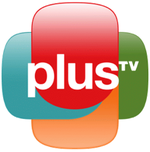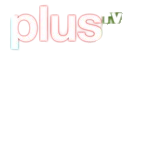Television in the Republic of Ireland is available through a variety of platforms. The digital terrestrial television service is known as Saorview and is the primary source of broadcast television since analogue transmissions ended on 24 October 2012. Digital satellite and digital cable are also widely used.
MHEG-5, or ISO/IEC 13522–5, is part of a set of international standards relating to the presentation of multimedia information, standardised by the Multimedia and Hypermedia Experts Group (MHEG). It is most commonly used as a language to describe interactive television services.
Television was introduced in Finland in 1955. Color television started in 1969 and was introduced gradually, with most programs in color by the late 1970s. All terrestrial analogue stations stopped broadcasting on 1 September 2007 after the introduction of digital television; cable providers were allowed to continue analog broadcasting in their networks until 1 March 2008.
Multimedia Home Platform (DVB-MHP) is an open middleware system standard designed by the DVB project for interactive digital television. The MHP enables the reception and execution of interactive, Java-based applications on a TV-set. Interactive TV applications can be delivered over the broadcast channel, together with audio and video streams. These applications can be for example information services, games, interactive voting, e-mail, SMS or shopping. MHP applications can use an additional return channel that has to support IP.
Digital terrestrial television is a technology for terrestrial television in which land-based (terrestrial) television stations broadcast television content by radio waves to televisions in consumers' residences in a digital format. DTTV is a major technological advance over the previous analog television, and has largely replaced analog which had been in common use since the middle of the 20th century. Test broadcasts began in 1998 with the changeover to DTTV beginning in 2006 and is now complete in many countries. The advantages of digital terrestrial television are similar to those obtained by digitising platforms such as cable TV, satellite, and telecommunications: more efficient use of limited radio spectrum bandwidth, provision of more television channels than analog, better quality images, and potentially lower operating costs for broadcasters.
Boxer TV Access is a Swedish brand owned by Tele2 AB providing pay television channels on the digital terrestrial television network in Sweden. Modeled on the British ITV Digital, it was founded in October 1999. Some channels on the Swedish DTT are free-to-air, but most of the channels require subscription from Boxer. Boxer has claimed to have around 500,000 subscribers by June 2016 when it was acquired by ComHem.
Datacasting is the broadcasting of data over a wide area via radio waves. It most often refers to supplemental information sent by television stations along with digital terrestrial television (DTT), but may also be applied to digital signals on analog TV or radio. It generally does not apply to data which is inherent to the medium, such as PSIP data which defines virtual channels for DTT or direct broadcast satellite systems; or to things like cable modem or satellite modem, which use a completely separate channel for data.
Analogue television in the United Kingdom includes terrestrial, satellite and cable services that were broadcast using analogue television signals. Following the termination of Virgin Media's analogue cable television service in Milton Keynes in November 2013, all television in the United Kingdom is broadcast in digital only.
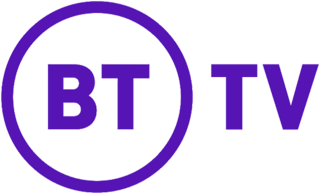
BT TV is a subscription IPTV service offered by BT; a division of United Kingdom telecommunications company BT Group, and was originally launched as BT Vision in December 2006. As of the end of June 2019, BT TV had 1.9 million customers.
Digital terrestrial television in the Philippines are in development by the Philippine major broadcasting companies.
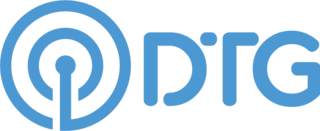
The DTG is the association for British digital television broadcasters and annually publish and maintain the technical specifications for digital terrestrial television (DTT) in the United Kingdom, which is known as the D-Book and is used by Freeview, Freeview HD, FreeSat and YouView. The association consists of over 120 UK and international members who can participate in DTG activities to varying degrees, depending on their category of membership.

Freeview is the brand name of the digital terrestrial television platform in Australia intended to bring all of free-to-air (FTA) broadcasters onto a consistent marketing platform, to compete against subscription television, in particular Foxtel. The strategy coincided with the expansion to 3 digital channels for each FTA network and the planned phasing out of analog television in Australia. Important services from Freeview include its free-to-air channels with an enhanced EPG across all channels. Freeview also certifies televisions, set-top boxes and personal video recorders (PVR) which meet its standards.
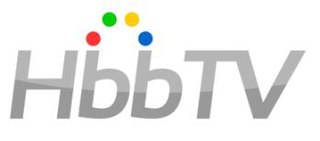
Hybrid Broadcast Broadband TV (HbbTV) is both an industry standard and promotional initiative for hybrid digital TV to harmonise the broadcast, Internet Protocol Television (IPTV), and broadband delivery of entertainment to the end consumer through connected TVs and set-top boxes. The HbbTV Association, comprising digital broadcasting and Internet industry companies, has established a standard for the delivery of broadcast TV and broadband TV to the home, through a single user interface, creating an open platform as an alternative to proprietary technologies. Products and services using the HbbTV standard can operate over different broadcasting technologies, such as satellite, cable, or terrestrial networks.
Saorview is the national digital terrestrial television (DTT) service in Ireland. It is owned by RTÉ and operated by 2RN.

HD+ is a premium high-definition (HD) satellite television service for German users, owned by HD PLUS GmbH, a subsidiary of SES based in Unterföhring near Munich, Germany.
Canal+ was a Spanish satellite broadcasting platform. It was previously known as Digital+ since its launch in 2003, and from 2011 it was known as Canal+, being named after its main premium channel.

MYTV Broadcasting Sdn. Bhd. or simply MYTV is a Malaysian television broadcasting private company providing free digital terrestrial television (DTT) in the country, considered a first of its kind in the country. The DTT service is officially branded as myFreeview since August 2015, though the legal name of the company remained unchanged A billion MYR deal have been signed with Telekom Malaysia to distribute the services. The set top box has been available for sale as of February 2017, after long delays of building infrastructure and other issues.
SWISS TXT (SWISS TXT Corporation) (until December 2015: SWISS TXT Schweizerische Teletext AG) is a subsidiary and the centre of multimedia expertise of the Swiss Broadcasting Corporation.
TV4 Media AB is a Swedish media holding company which is currently a part of the Swedish telecommunications company Telia Company, having acquired it from Swedish multimedia conglomerate Bonnier Group. The company owns Swedish commercial broadcaster TV4 AB, Finnish commercial broadcaster MTV Oy, and pan-Nordic premium television channel operator C More Entertainment.
SABC Education is a South African educational television channel owned by the South African Broadcasting Corporation (SABC).
